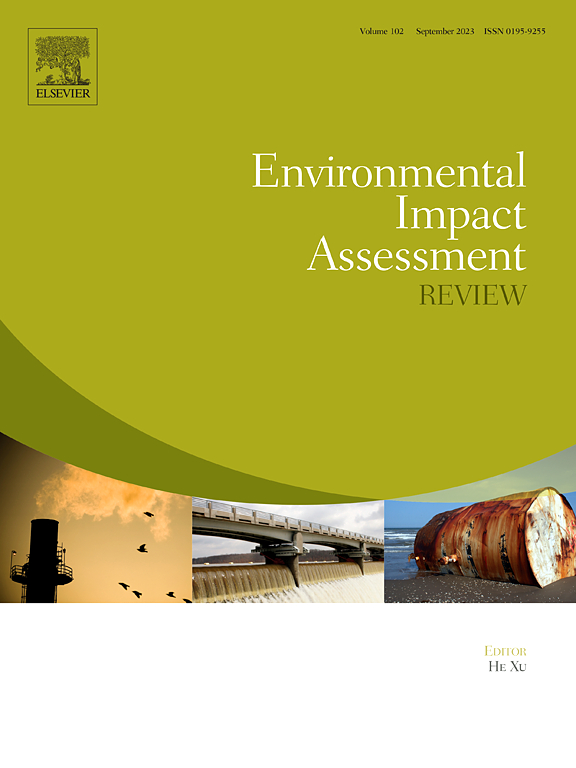中国能源经济不平等加剧及其决定因素:国内价值链分解方法
IF 9.8
1区 社会学
Q1 ENVIRONMENTAL STUDIES
引用次数: 0
摘要
以中国西气东输工程为代表的区域间能源合作,对维护能源安全和促进经济增长具有重要作用。然而,国内贸易中能源经济流动的不平衡可能会破坏这些合作努力。本研究利用多区域投入产出框架下的国内价值链(DVC)分解,调查了与国内贸易相关的能源经济不平等(EEI)及其决定因素,EEI被定义为能源成本和经济效益在各区域之间的不均衡分布。结果表明:①传统、简单、复杂DVC三个分量的能耗和附加值均呈稳步增长趋势,能源和经济从资源依赖型内陆地区向富裕的沿海地区转移显著;(2) 2012 - 2020年,全国EEI指数持续增长,增长134.25%,其中2017-2020年增速加快,达到81.16%。这种上升趋势在复杂的DVC内最为明显,在工业省份(如北京、浙江、广东)和资源丰富省份(如青海、宁夏)之间观察到最大的相互经济效益指数;(3) 2012 - 2020年,区域间能源效率和生产结构的差异主要驱动了区域间经济效益指数的上升。对于特定的DVC路径,传统DVC的EEI主要受最终需求结构效应的影响,而简单DVC和复杂DVC的EEI主要受生产结构效应的影响。本研究为未来基于DVC分解的环境和经济不平等研究提供了一个方法框架,并为寻求通过DVC内部协调努力减轻EEI的政策制定者提供了见解。本文章由计算机程序翻译,如有差异,请以英文原文为准。
Rising energy-economic inequality in China and its determinants: A domestic value chain decomposition approach
Interregional energy cooperation, exemplified by China's west-to-east electricity and gas transmission projects, plays crucial roles in safeguarding energy security and promoting economic growth. However, imbalanced energy-economic flows in domestic trade could undermine these collaborative efforts. This study investigates energy-economic inequality (EEI) associated with domestic trade, defined as the uneven distribution of energy costs and economic benefits across regions, and its determinants, using a domestic value chain (DVC) decomposition within a multi-regional input-output framework. The results show that: (1) Both energy consumption and value-added embodied in three DVC components (i.e., traditional, simple, complex DVCs) have steadily increased, highlighting substantial energy and economic transfers from resource-dependent inland regions to affluent coastal regions; (2) The national EEI index has demonstrated sustained growth, rising by 134.25 % between 2012 and 2020, with accelerated growth (81.16 %) occurring during 2017–2020. This upward trend was most pronounced within the complex DVC, with the greatest mutual EEIs observed between industrialized provinces (e.g., Beijing, Zhejiang, Guangdong) and resource-rich provinces (e.g., Qinghai, Ningxia); (3) Rising mutual EEIs between 2012 and 2020 were primarily driven by interregional disparities in energy efficiency and production structure. For specific DVC pathways, the EEI in the traditional DVCs was mainly influenced by final demand structure effects, while those in simple and complex DVCs were determined by production structure effects. This study offers a methodological framework for future research on environmental and economic inequalities based on DVC decomposition and provides insights for policymakers seeking to mitigate EEI through coordinated efforts within DVCs.
求助全文
通过发布文献求助,成功后即可免费获取论文全文。
去求助
来源期刊

Environmental Impact Assessment Review
ENVIRONMENTAL STUDIES-
CiteScore
12.60
自引率
10.10%
发文量
200
审稿时长
33 days
期刊介绍:
Environmental Impact Assessment Review is an interdisciplinary journal that serves a global audience of practitioners, policymakers, and academics involved in assessing the environmental impact of policies, projects, processes, and products. The journal focuses on innovative theory and practice in environmental impact assessment (EIA). Papers are expected to present innovative ideas, be topical, and coherent. The journal emphasizes concepts, methods, techniques, approaches, and systems related to EIA theory and practice.
 求助内容:
求助内容: 应助结果提醒方式:
应助结果提醒方式:


